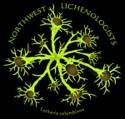Hello everyone,
I have two Cladonia specimens from the Evergreen State College campus leading to some confusion. I am hoping these compilation photos I put together will be large enough to act a visual aids without confusing which specimens I am referring to below. I am using Macrolichens, 2nd ed. to key.
Both specimens lead me to the C. subulata / C. coniocraea / C. ochrochlora section of the key, but then things become muddy. For example, the perforations in Cladonia 1 could be C. subulata though the substrate isn't right and the squamules are quite large. Cladonia 2 also has very large squamules and could be C. ochrochlora but apothecia in this species are rare. They could also both be the same thing. I am curious to know what others think.
Thanks for your time and guidance!
Cladonia 1
Cladonia Key: 1b Stalks simple to few-branched, pointed, blunt or tipped with cups, 2b Apothecia brown or lacking, 3b Podetia present, 4b Podetia lacking definite cups, 6b Podetia sorediate —> Group 6: 68b Thallus UV-, 73b Podetia gray-green, green, or brownish, usnic acid lacking, 75b Soredia fine, powdery; thallus P– or P+R, 78b Podetia P+O or R (fumarprotocetraric acid); squamules various…
Substrate: PSME bark, moss Ecology: Low elevation, second growth forest, conifer dominant overstory Chemistry: UV-, P+O, K-
Cladonia 2
Cladonia Key: 1b Stalks simple to few-branched, pointed, blunt or tipped with cups, 2b Apothecia brown or lacking, 3b Podetia present, 4b Podetia lacking definite cups, 6b Podetia sorediate —> Group 6: 68b Medulla UV-, 73b Podetia gray-green, green, brown, usnic acid lacking, 75b Soredia fine, powdery; thallus P– or P+R, 78b P+O or R (fumarprotocetraric acid) squamules various 79b Podetia corticate toward base, with or without cups...
Substrate: PSME bark, moss Ecology: Low elevation, second growth forest, conifer dominant overstory Chemistry: UV-, P+O, K reaction was pretty dingy yellow on it's own

